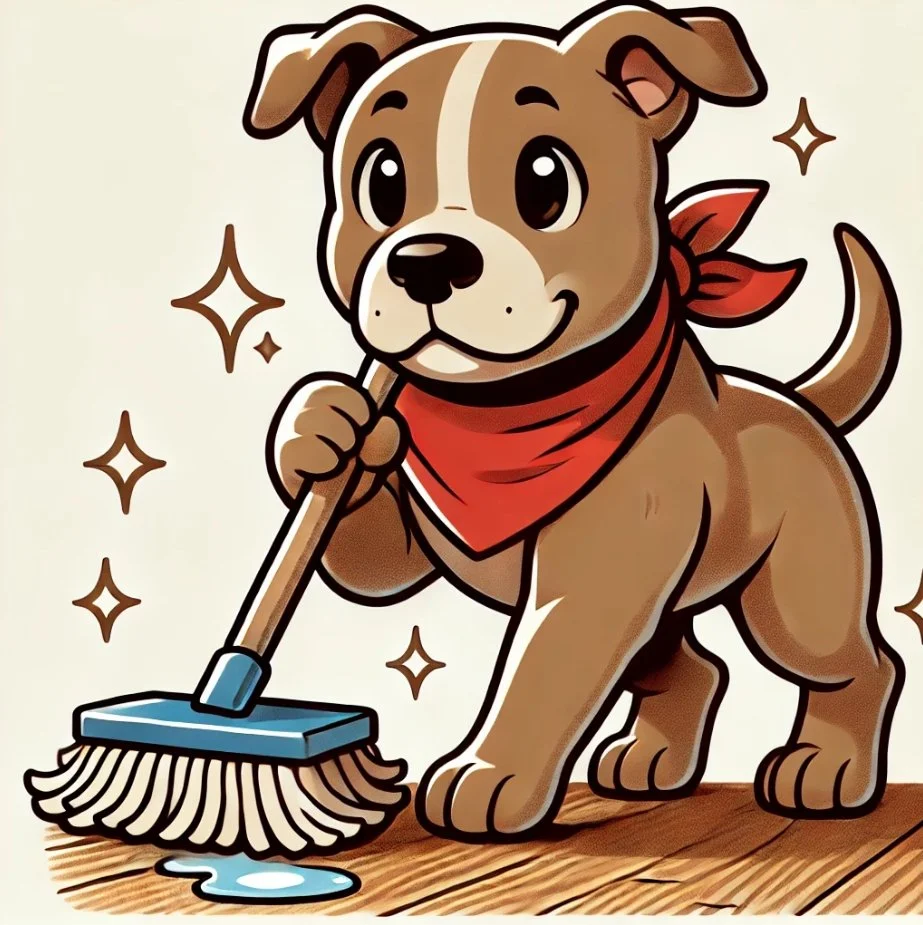How to clean different types of floors: Hardwood, tile, and carpet
Every type of flooring in your home requires special care to maintain its appearance and durability. While hardwood, tile, and carpet may look and feel different, each type has specific cleaning methods that can help it stay in top shape for years. Whether you’re dealing with everyday dust, spills, or more stubborn stains, knowing how to clean and care for each floor type will ensure your home remains fresh, clean, and inviting.
1. Cleaning Hardwood Floors
Hardwood floors are known for their timeless beauty, but they require delicate care to avoid scratches, stains, and dullness.
General Cleaning:
Vacuum or Sweep: Regularly vacuum or sweep your hardwood floors to remove dust, dirt, and debris. Be sure to use a vacuum with a floor-brush attachment or a broom with soft bristles to avoid scratching the surface.
Dry Mop: Use a microfiber mop to pick up fine dust and debris that a vacuum or broom might miss. Microfiber is gentle on the floor and effective at attracting dust without scratching the finish.
Deep Cleaning:
Damp Mop: Occasionally damp mop the floor with a cleaning solution specifically made for hardwood floors. Use a mop with a slightly damp cloth—not wet, as excessive moisture can warp wood. A mixture of water and a few drops of mild dish soap works well, or you can use a hardwood-specific cleaner.
Avoid Harsh Chemicals: Never use harsh cleaners like ammonia, bleach, or wax-based products, as they can damage the wood’s finish and cause discoloration.
Maintaining Shine:
Polish Regularly: To restore shine and provide a protective layer, use a wood polish or floor refinisher that is safe for your floor type. Avoid waxing unless the floor is unfinished or has a specific wax recommendation.
Tip: Place rugs or mats in high-traffic areas and under furniture to minimize wear and tear.
2. Cleaning Tile Floors
Tile floors, whether ceramic, porcelain, or stone, are durable and resistant to moisture, but they can accumulate dirt, grime, and stains, particularly in grout lines.
General Cleaning:
Sweep or Vacuum: Sweeping or vacuuming is essential to remove dirt, dust, and small debris from the surface of tile floors. Use a vacuum with a hard floor setting to avoid damaging the grout and tiles.
Mop Regularly: Mop your tile floors weekly or as needed to keep them sparkling clean. Use a tile-safe cleaner or a mixture of water and mild dish soap. For natural stone tiles, avoid acidic cleaners like vinegar that can damage the surface.
Deep Cleaning:
Focus on Grout: Grout can stain easily and collect dirt. Use a grout cleaner or a paste made from baking soda and water. Apply the paste to the grout lines, let it sit for 10-15 minutes, and scrub with a toothbrush. For heavy staining, you can use a steam cleaner.
Clean the Tiles: For stubborn dirt or buildup, use a non-abrasive tile cleaner or a mixture of equal parts water and vinegar. Use a mop or soft cloth to apply the solution, then wipe the tiles dry.
Maintaining Shine:
Buff Dry: After mopping, dry the tiles with a microfiber cloth to prevent water spots and enhance the shine.
Tip: Seal grout lines every 6-12 months to prevent stains and help maintain cleanliness.
3. Cleaning Carpet Floors
Carpets are cozy and soft, but they trap dirt, dust, and stains. Regular cleaning is crucial to maintain their appearance and hygiene.
General Cleaning:
Vacuum Regularly: Vacuuming is the most effective way to remove dirt, dust, and pet hair from your carpet. It should be done at least once a week, or more frequently in high-traffic areas. Be sure to vacuum along the edges of the room and under furniture, where dirt can accumulate.
Spot Clean Stains: For spills or stains, immediately blot (don’t rub) the area with a clean cloth to absorb as much liquid as possible. Apply a small amount of carpet cleaner or a vinegar-water solution to the spot, then blot again. For pet stains, use an enzymatic cleaner to remove odors and bacteria.
Deep Cleaning:
Shampoo the Carpet: Every 6-12 months, deep clean your carpets using a carpet shampooer or hire a professional. You can rent a steam cleaner from many hardware stores or hire a service that specializes in carpet cleaning.
Treat Heavy Stains: For particularly stubborn stains, use a carpet stain remover specifically designed for the type of stain you are dealing with. Follow the manufacturer’s instructions carefully to avoid damaging the fibers.
Maintaining Freshness:
Deodorize: Sprinkle baking soda on your carpet and let it sit for 15-30 minutes before vacuuming to neutralize odors. You can also use a carpet deodorizer that’s safe for your type of carpet.
Use Rugs in High-Traffic Areas: To protect your carpet, place area rugs or runners in high-traffic areas to reduce wear and tear.
Tip: If you have pets, invest in a vacuum cleaner designed for pet hair, as it will be more effective at removing hair and dander.
Conclusion
Each floor type—hardwood, tile, and carpet—requires specific cleaning techniques to preserve its beauty and longevity. By following the correct cleaning methods for each floor type, you can ensure your floors stay in excellent condition for years to come. Regular maintenance, deep cleaning, and using the right products will not only enhance the appearance of your floors but also improve the overall hygiene and comfort of your home.
